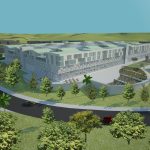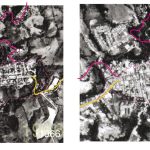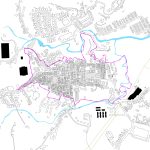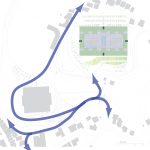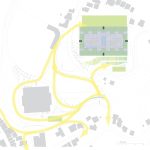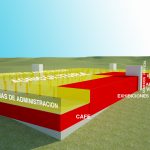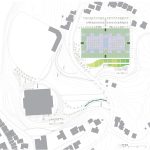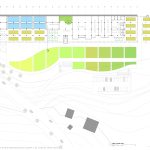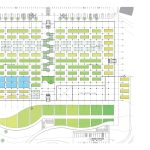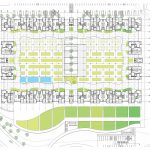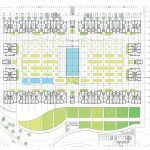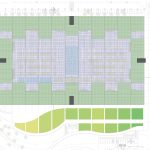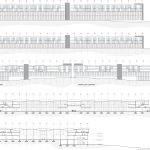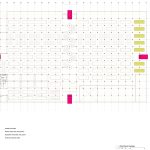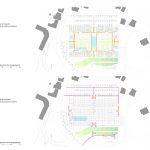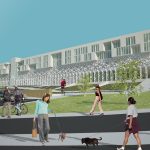Centro de Agricultura e Investigación de Aguas Buenas
““
Designer: Ileana Rivera Ramirez
Thesis Date: May 2012
Thesis Director and Committee: Elio Martínez Joffre
TOS[er]: Gabriela Mesa Soto
TOS Post: May 2016
Ileana Rivera investiga como centros urbanos han sido opacados por desarrollos en su periferia. Como parte del proceso, estudia el poder que poseían en un momento y la taxonomía de su periferia con la meta de reintegrar el centro histórico tradicional a la realidad contemporánea típica de los pueblos. Es en esta periferia donde vive la mayor parte de los puertorriqueños ya que la misma tiene ciertos aspectos que hacen que las personas la valoren más que al centro urbano. Utiliza estos aspectos inversamente para lograr que se valore el centro urbano nuevamente. Rivera desarrolla su propuesta en el pueblo de Aguas Buenas; propone unir las lógicas periféricas en el centro urbano, reutilizando un edificio industrial de la periferia cercana para densificar esta zona a través de vivienda y agricultura. Abre y se conecta peatonalmente al centro urbano, para recuperar la unión con el mismo. A su vez, recupera lo que identifica a Aguas Buenas: su agricultura y naturaleza. Se propone un edificio de uso mixto, en el cual las personas que lo habitan pueden trabajar en sus espacios agrícolas como también trabajar en los comercios de venta de estos productos. Las viviendas forman una especie de galerías, orientadas hacia el centro donde se encuentra el área agrícola, manteniendo una reciprocidad visual entre la vida doméstica y la vida cotidiana. El edificio se pierde con el paisaje a través de una serie de techos curvos siguiendo la línea montañosa del pueblo, estos a su vez están perforados para lograr que la luz y la ventilación entre a los espacios agrícolas. Es grandioso poder solucionar tantos problemas con un solo diseño, es de suma importancia recuperar esas relaciones y también trabajar la agricultura de nuestro país.
Ileana Rivera investigates how urban centers have been abandoned due to peripheral developments. Rivera studies the periphery with the goal of restoring the historical traditional center to the contemporary reality of our towns. She develops her thesis in Aguas Buenas; she proposes to join the peripheral logics in the urban center, re-using an industrial building of the nearby periphery to densify this zone through housing and agriculture. She opens and connects the pedestrians to the urban center, to recover the union with it. By the meantime, she recovers what identifies Aguas Buenas: its agriculture and nature. The proposal is a building of mixed use, where the people who inhabit it can be employed in its agricultural spaces and also at sales of these products. The housings form galleries orientated towards the center where one finds the agricultural area, supporting a visual reciprocity between the domestic life and the daily life of the person. The building gets lost with the landscape through a series of curved ceilings following the mountains of the village, these are perforated to achieve that light and ventilation enter to the agricultural spaces. It is grand to be able to solve so many problems with just one design; it is of supreme importance to recover these relations and also work the agriculture of our country.

